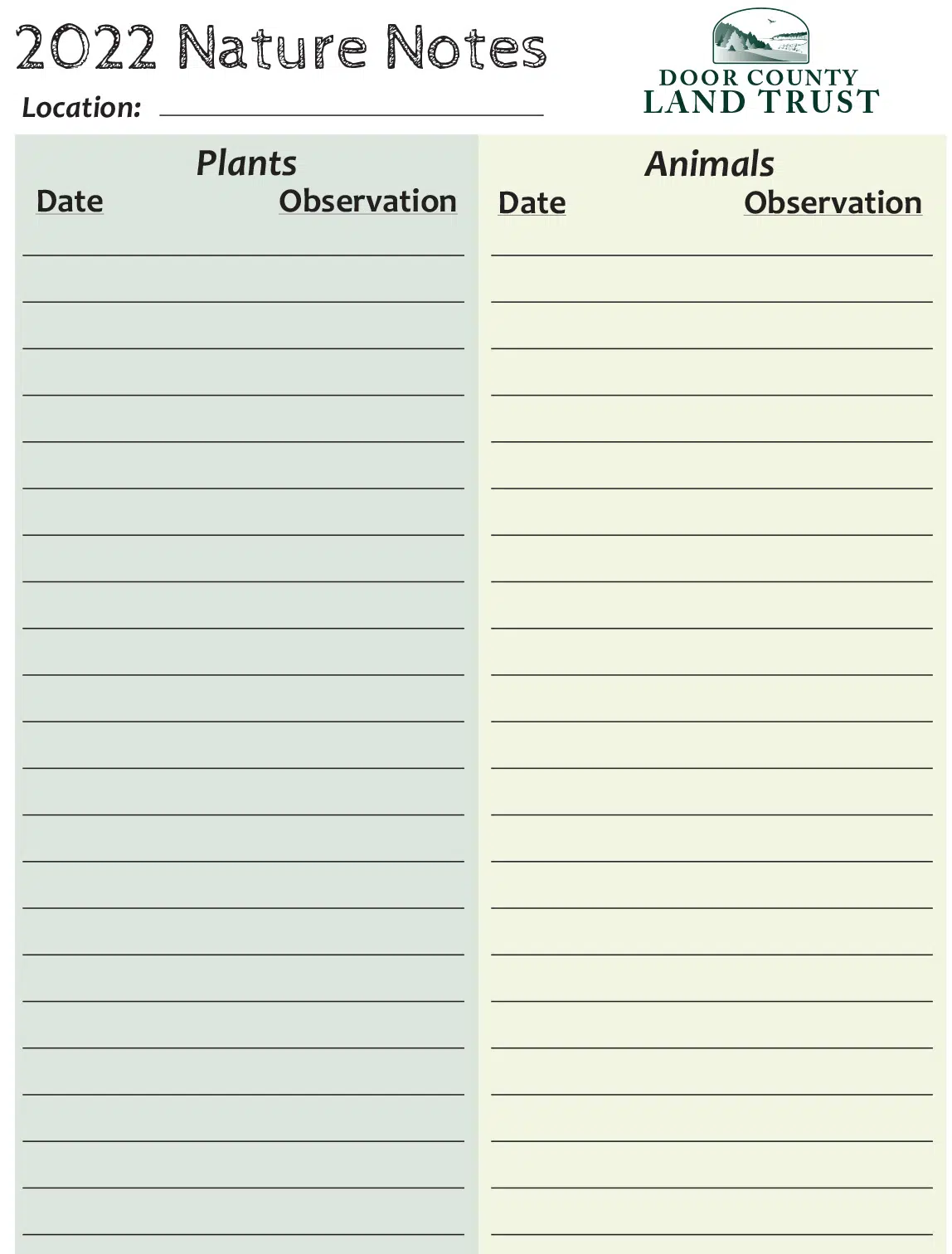Phenology
Phenology, the study of phenomena, is simply the study of what is happening in the world. It means studying natural events and seasons, like frogs’ spring choruses and the turning of leaves, and recording them over time. These observations allow scientists to watch for changing patterns in plant and animal behavior, which helps predict trends in the future and advise conservation strategies. A phenology journal is simply a fancy scientific word for a nature journal. Keeping a phenology journal is simple and you can use the dates in this calendar to start your own observations.
How to Create Your Own Phenology Journal
The first step is to select a site. You will want to choose a site you can visit regularly, like your backyard or a park you visit often, so your observations can be easily repeated. The more repetitive your observations are over the seasons, the more accurate and detailed your phenology journal will be.
Next, you’ll want to decide which plants and animals you will observe and record within your site. By focusing on a single plant species or the few species within a small area, you’ll be able to record the events of those plants easily each time you observe the site over the full season. If watching the water at Three Springs Nature Preserve for example, you could record the date when newly emerging leaves or needles are first visible on trees in the springtime.
Observing birds, animals, and insects, you may take a similar or different approach. You may choose to record the specific activities and actions of a chosen target species, such as the courtship, nesting, and fledging of bluebirds, or the stages of amphibian life from egg, to tadpole, to adult. You could record pelicans diving for food or squirrels burying nuts for a later snack.
Alternatively, to track the spring arrival or emergence of insects and birds, you may record every species you observe (for example, today’s visitors to the birdfeeder include chickadees, dark-eyed juncos, and cardinals). At the end of a season, you’ll be able to discern the arrival and departure dates of migrating birds or the emergence and hibernation of bumblebees, or your chosen species.
The columns on this page are split into two. Plant observations can go on the left and animal or insect observations on the right. Start by recording the location, date, and time of your observations, as well as general weather or seasonal notes, and anything else of importance.
After you choose your location and the focus of your observations, you will want to record the phenophase (a specific behavior or stage of life) that you see occurring. Record the name of the plant or animal as well as the behavior you observe. When you have filled up your page or journal, send Door County Land Trust a photo or copy and we will add your notes to next year’s calendar! By collecting data from locations around Door County, we hope to improve the usefulness of this phenology calendar over time. Thanks for being a citizen scientist and helping everyone unlock Door County’s natural patterns.
Click image below for a printable log sheet!
Plant Phenophase Examples...
Date of first trilliums blooming in the woods, fresh growth of pine tree needles, tree leaves fully open, first bloodroot leaves to emerge, etc.
Animal Phenophase Examples...
Date of first worms out of soil, unique or identifiable frog calls, bumblebees pollinating plants, birds nesting or feeding, first baby toads hopping about, etc.

